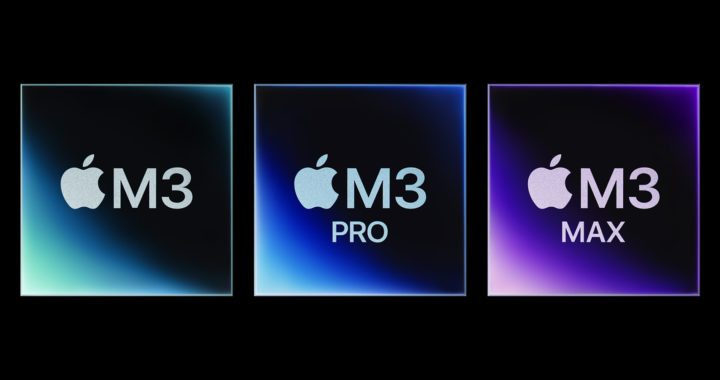The “Scary Fast” Apple Event held on 30 October 2023 welcomed the Apple M3 family of systems-on-a-chip that include the base Apple M3, the Apple M3 Pro, and the Apple M3 Max. The introduction of these third-generation M-series chips is still based on the core semiconductor strategy and product strategy of Apple that has been observed with the Apple M1 and the subsequent Apple M1 Pro and Apple M1 Max, and the Apple M2 family of chips. Each model is marketed at a particular segment and for predefined use cases. This article compares and explores the differences between the Apple M3, Apple M3 Pro, and Apple M3 Max.
Comparing the Apple M3 Chips: Similarities and Differences Between the Apple M3, Apple M3 Pro, and Apple M3 Max
Technology and Architecture
One of the similarities between these three third-generation M-series chips from Apple is that they are based on the 3nm process of TSMC. This makes them the first-ever chips for personal computers to use the 3nm semiconductor manufacturing process. Take note that the Apple A17 Pro chip in the iPhone 15 Pro and iPhone 15 Pro Max is based on the same process node while the Apple M1 and Apple M2 families of chips are based on the 5nm process node.
The newer-generation process node means that the M3 chips have more transistors. This makes them theoretically faster and more energy efficient. However, when it comes to the actual physical size and transistor count, a notable difference between the three Apple M3 chips is that the base M3 chip is the smallest and has 25 billion transistors, followed by the M3 Pro with 37 billion transistors, and with the M3 Max as the largest with 92 billion transistors.
All three chips are also based on the same RISC-based ARM instruction set architecture and the big.LITTLE microarchitecture for their central processing units. Their respective central processing units are specifically composed of performance cores and efficiency cores. These chips also usual components such as an integrated GPU, Neural Engine, media engine, Unified Memory, image signal processor, and the Apple Secure Enclave, among others.
Processing and Unified Memory
The Apple M3 chips have profound improvements over the M1 and M2 families of chips. However, among the three, the base M3 has lesser processing capabilities than the Max and Pro variants. The CPU of this base model is still about 32 percent faster than the Apple M1 while its GPU is about 60 percent faster at its peak performance compared to the base first-generation M chip. These better processing capabilities come from its denser transistor count.
It is also important to note that all three chips under the third generation feature a new GPU architecture that gives them better graphics processing capabilities. The GPU also comes with hardware-accelerated ray tracing for rendering graphics that mimic the natural properties of light and hardware-accelerated mesh shading for rendering polygons. These accelerators can produce more realistic graphics for a more immersive gaming experience.
The main difference among the Apple M3 chips is the number of CPU and GPU cores and the maximum support for Unified Memory. The base variant has an 8-core CPU and 10-core GPU with support for up to 25GB of Unified Memory. The Pro variant has a 12-core CPU and 18-core GPU with up to 36GB Unified Memory support while the Max variant has a 16-core CPU and 40-core GPU with support for up to 128GB of Unified Memory.
Recommended Uses and Availability
Another difference between the Apple M3, Apple M3 Pro, and Apple M3 Max chips is their intended use cases. The base model is a capable entry-level and consumer-oriented chip. It is suitable for everyday tasks like web browsing, email, office work, and casual gaming. This chip is also capable of handling some creative work like photo editing, video editing, and music production with average to above-average hardware resource requirements.
The Pro variant is a professional-oriented chip designed for more demanding tasks like professional video editing, 3D modeling, animation, and gaming. It can also support up to 2 external displays. The Max variant takes these use cases to another level. It is an enthusiast-level chip for extreme tasks like 8K video editing, high-end gaming, artificial intelligence or machine learning modeling, and scientific computing. It can support up to 4 external displays.
It is important to note that the base Apple M3 is available in the 2023 14-inch MacBook Pro and the 2023 24-inch iMac computers. The Apple M3 Pro is available in the 2023 16-inch MacBook Pro and the 2023 27-inch iMac computers while the Apple M3 Max is available as an option for the 2023 16-inch MacBook Pro, the 2023 27-inch iMac computers, and the newer Mac Pro computers. The Max is also the most expensive among the three M3 chips.
